
When Notre Dame Cathedral in Paris went up in flames in 2019, it wasn’t only the French who felt the loss. Within days, laser scans and 3D models created years earlier became the foundation for plans to restore the landmark. Similar stories are unfolding worldwide as wars, rapid urbanisation, and climate change place cultural heritage under threat.
 Dr Surendheran Kaliyaperumal, Lecturer in Digital Media at RMIT Vietnam, believes that design education can become a powerful tool for preserving cultural memory in the digital age. (Photo courtesy of Dr Surendheran Kaliyaperumal)
Dr Surendheran Kaliyaperumal, Lecturer in Digital Media at RMIT Vietnam, believes that design education can become a powerful tool for preserving cultural memory in the digital age. (Photo courtesy of Dr Surendheran Kaliyaperumal)
From the Zamani Project in South Africa to CyArk’s global “Open Heritage” initiative with Google, countries and institutions are racing to digitise memory before it disappears. For example, Pompeii in Italy has been the focus of major digitisation projects, turning fragile ruins into interactive archives for scholars and the public alike.
Vietnam is still at an early stage. The Ministry of Culture, Sports and Tourism has launched a program to digitise cultural heritage from 2021–2030, but most initiatives remain in the process of scaling up. Yet this also opens a unique opportunity: to leapfrog into the global movement by anchoring digital preservation in education and grassroots creativity.
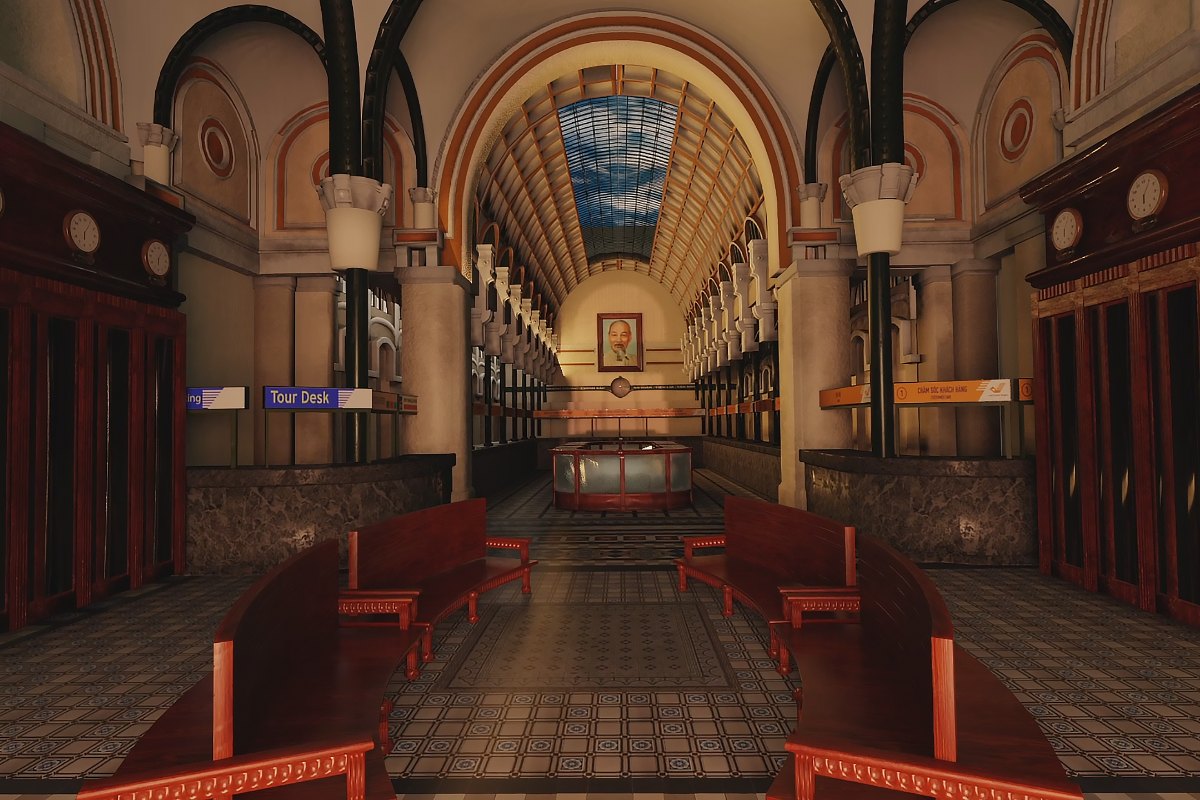 Saigon Central Post Office – a French-colonial landmark intertwined with family stories and generations of handwritten letters. (Created by Do Tu Uyen)
Saigon Central Post Office – a French-colonial landmark intertwined with family stories and generations of handwritten letters. (Created by Do Tu Uyen)
“Vietnam’s rapid urbanisation is transforming the physical landscape at an incredible pace,” says Dr Surendheran Kaliyaperumal, Lecturer in Digital Media at RMIT Vietnam. “While development brings growth, it also risks the quiet erasure of culturally significant places, especially those not on official preservation lists. Digital preservation is essential in this context. For a country with such a rich and diverse heritage, this is not just important, it’s urgent.”
For the past three years, Dr Surendheran has led RMIT Vietnam’s Fundamentals of Creative 3D course with a twist. Instead of designing generic objects or fantasy worlds, students are tasked with selecting real heritage sites, from temples and colonial buildings to parks and even street eateries and recreating them in Blender (3D production software)
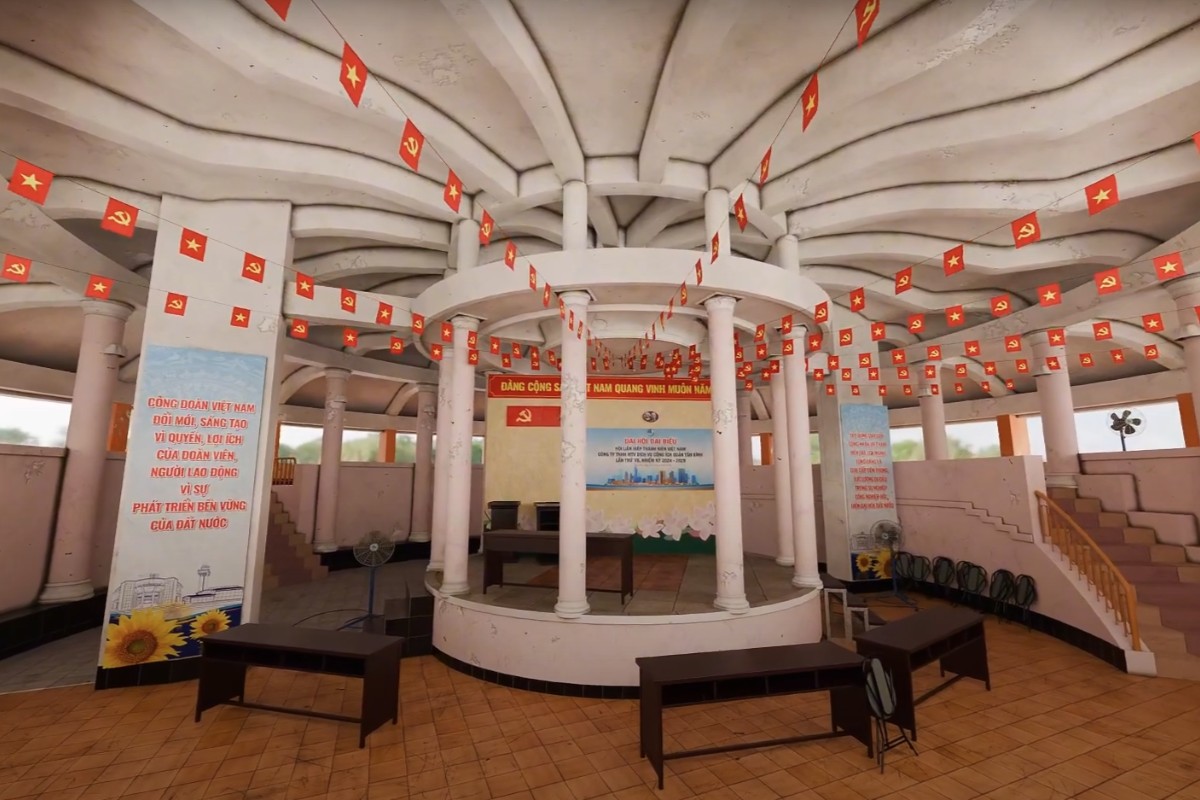 Public hall at Hoang Van Thu Park – a familiar civic space that bridges urban life and historical memory. (Created by Nguyen Xuan Dien)
Public hall at Hoang Van Thu Park – a familiar civic space that bridges urban life and historical memory. (Created by Nguyen Xuan Dien)
The results are striking. To date, students have modeled more than 100 Vietnamese sites, of which around 65 are considered archive-worthy. The collection ranges from icons such as the Saigon Central Post Office and Independence Palace to intimate, everyday places like Hoang Van Thụ Park or a humble “pha lau” eatery on Nguyen Thanh Y street.
“One student told me she used to eat there since 7th grade,” Dr Surendheran said. “Sadly, the place has disappeared. But thanks to her work, it still lives in our archive. These selections demonstrate that heritage isn’t confined to monuments or touristic spots. It also lives in everyday spaces, childhood memories, and local stories.”
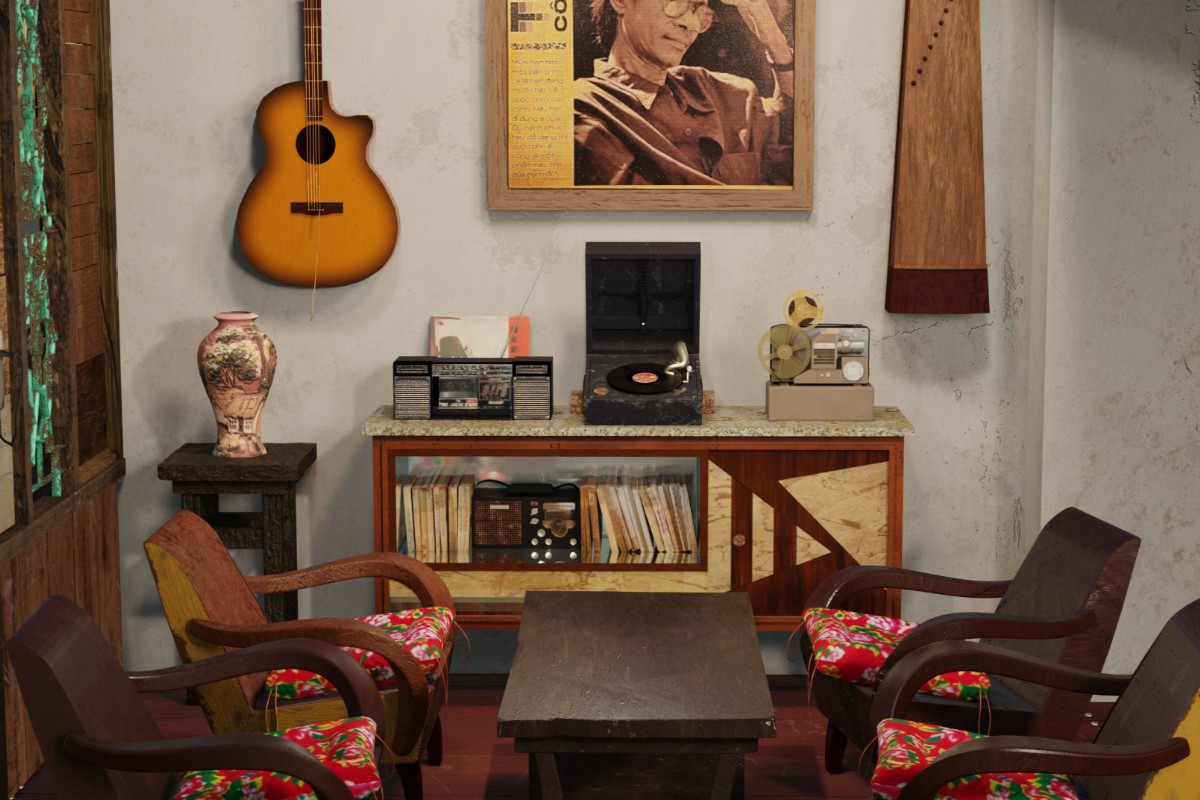 “Chuyen Ca Phe” – a nostalgic café reviving old Saigon aesthetics and homely social rituals. (Created by Le My Linh)
“Chuyen Ca Phe” – a nostalgic café reviving old Saigon aesthetics and homely social rituals. (Created by Le My Linh)
The impact on students goes far beyond technical skills. Many enter the course thinking, “I want to learn Blender.” By the end, they are saying, “I want to preserve my grandmother’s house” or “I finally understand the story behind this building I walked past every day.”
“They gain cultural awareness, storytelling ability, emotional connection, and a sense of ownership over their heritage. It’s deeply personal and transformative,” Dr Surendheran said.
“Because they choose the sites themselves, the projects carry intention and meaning that no external assignment could impose.”
The work has also been showcased publicly, from RMIT’s Breezeway exhibition in June 2024 to Experience Days in Ho Chi Minh City and Hanoi, where parents and community members could witness cultural memory preserved digitally for the first time.
Behind the course lies a deeper theoretical framework: regenerative design. Coined by J.T. Lyle, the concept refers to systems that “replace what they consume.” Applied to education, it means assignments should not vanish after grading but continue to grow in value.
 Offal Stew Eatery on Nguyen Thanh Y Street – a beloved local food spot preserved through memory and storytelling. (Created by Nguyen Truong Hoang Thu)
Offal Stew Eatery on Nguyen Thanh Y Street – a beloved local food spot preserved through memory and storytelling. (Created by Nguyen Truong Hoang Thu)
“Regenerative design is about creating systems that give back more than they take,” Dr Surendheran said. “A consumptive assignment ends with submission. A regenerative one lives on - being shared publicly, reused or built upon by others, and connected to cultural context. That completely changes how students view their own work.”
Each semester, new cohorts at RMIT inherit the archive, learn from it, and add their own contributions. The output circulates beyond the classroom, being showcased in exhibitions and even shared with families.
Dr Surendheran recalled emotional sharing of the students’ parents: “They say, ‘I never thought this could be preserved like this.’
“It bridges generations. For many, it’s the first time they’ve seen cultural memory translated into digital form.”
Even projects that are not archive-ready are not lost: upcoming cohorts revisit and improve them, embodying the regenerative principle that cultural preservation is never a one-off act but a cycle of refinement.
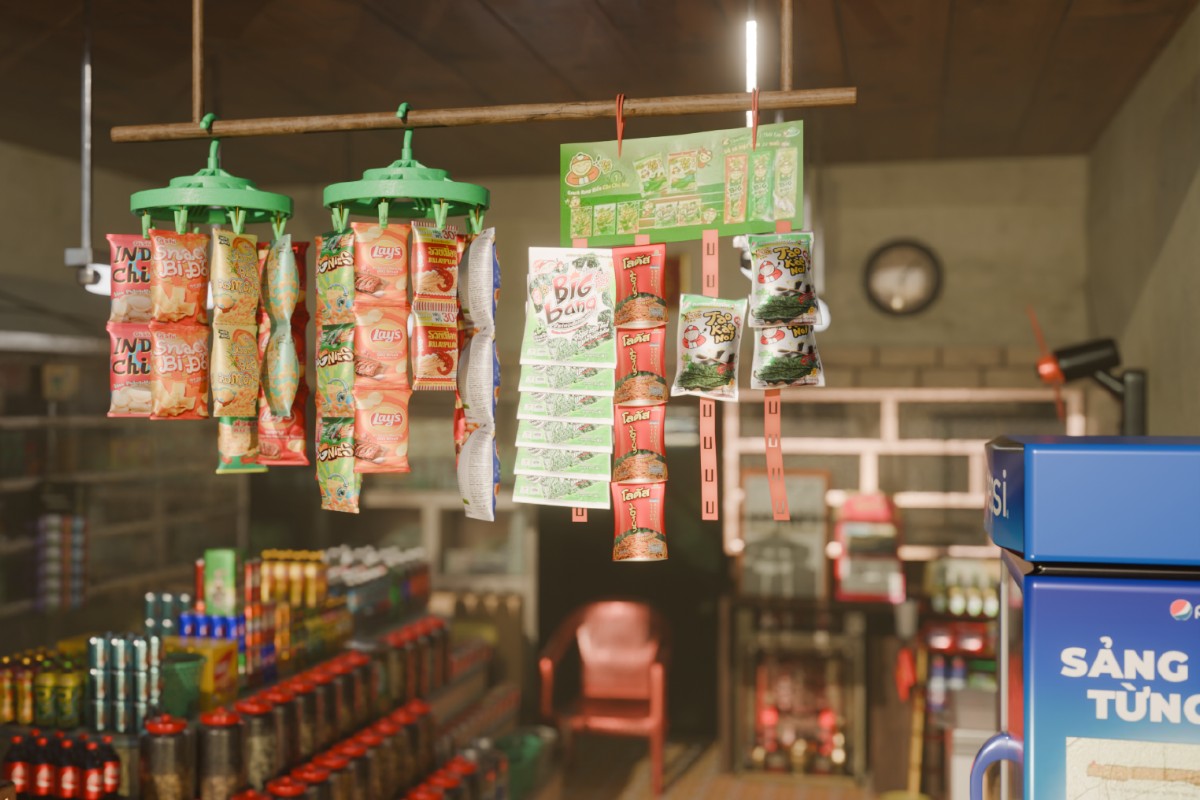 Huy Ky Confectionery, Cho Lon – a traditional corner shop filled with childhood snacks and community warmth. (Created by Huynh Truc Nhat Minh)
Huy Ky Confectionery, Cho Lon – a traditional corner shop filled with childhood snacks and community warmth. (Created by Huynh Truc Nhat Minh)
Globally, digital heritage is increasingly linked to creative industries. As AR, VR, and immersive storytelling expand, countries are turning digitised heritage into cultural tourism, education, and even gaming. Dr Surendheran believes Vietnam has all the ingredients to do the same.
“Digital heritage sits at the crossroads of design, storytelling, tourism, education and technology,” he said. “With the right investment, it can become as important as architecture or film. Vietnam has cultural richness, a young creative workforce, and growing access to digital tools. With these strengths, the country is well placed to turn digital preservation into a bridge between culture and innovation - transforming classrooms into creative laboratories and heritage into a living, shareable resource for the future.”
He also sees this as part of “decolonising” design education. Instead of teaching global tools in a vacuum, students ground them in Vietnamese contexts and personal stories. “Mastering Blender is one thing, but what we do is using it to tell local stories that might otherwise be forgotten,” he said.
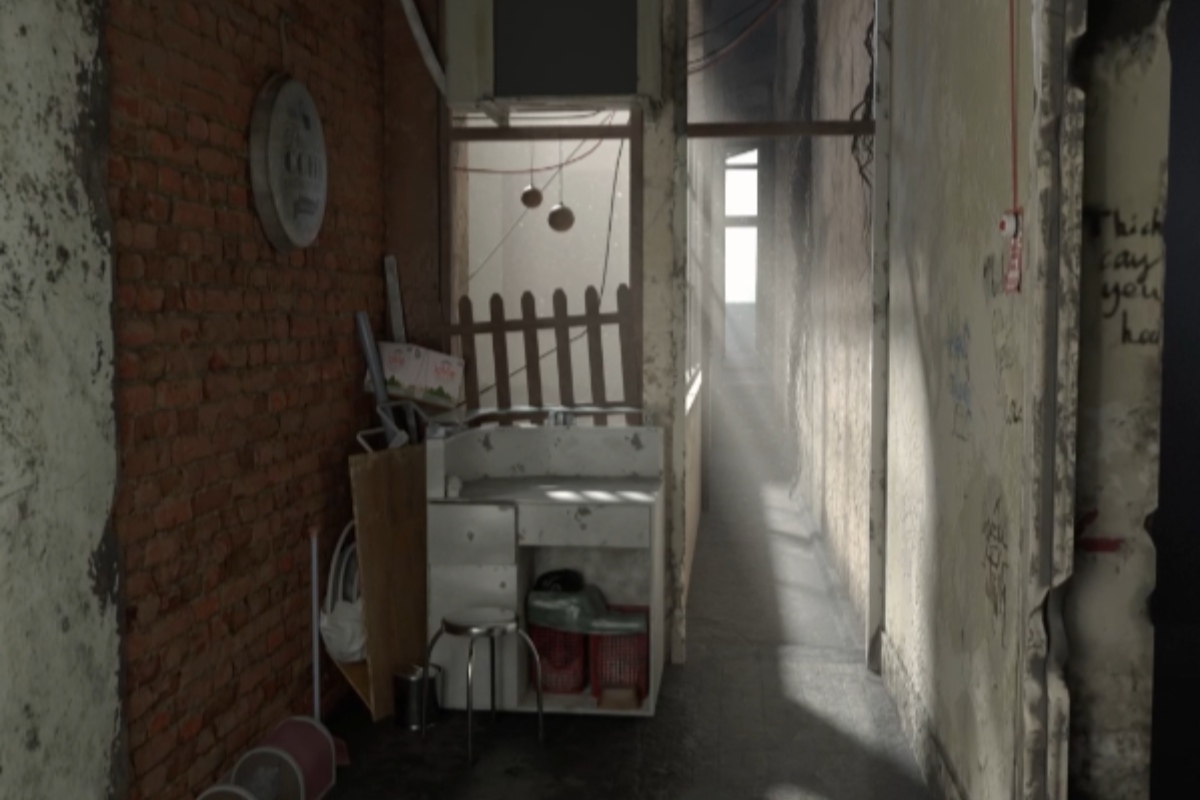 Ton That Dam Apartment Building – a vintage architectural gem that captures Saigon’s layered urban character. (Created by Tran Dinh Minh Long)
Ton That Dam Apartment Building – a vintage architectural gem that captures Saigon’s layered urban character. (Created by Tran Dinh Minh Long)
For Dr Surendheran, this goes beyond an academic exercise. This is a professional aspiration. He envisions a national, open-source archive where students, artists, and communities continually add to an evolving digital map of Vietnamese culture - an archive that in 10 to 20 years could serve as both a teaching resource and a cultural memory bank for the nation. His team is already prototyping VR walkthroughs, exploring AR integration, and planning collaborations with museums. “If this project inspires students to become cultural guardians, then I believe we’ve done something truly meaningful,” he said.
Challenges remain - lack of data, limited funding, short timelines - but the momentum is undeniable. And Dr Surendheran is clear that this vision is long-term: design can be more than commercial. It can be communal, emotional, and enduring.
Digital heritage may be a global race, but as RMIT Vietnam’s experiment shows, contributions need not wait for multimillion-dollar projects or national programs. Even in a single classroom, students are proving that design can regenerate value for the cultural memory of a nation in flux.
As Vietnam navigates its rapid urban transformation, initiatives like this suggest a powerful message: heritage can endure, if we teach the next generation not just to design, but to remember.
Story: Quan Dinh H.
Blended learning is reshaping how communication students learn, collaborate, and equip themselves for a rapidly evolving industry, according to academics from RMIT Vietnam’s School of Communication & Design.
AI should not only drive efficiency and innovation but also empower individuals who have historically faced barriers, said Dr Abdul Rohman from RMIT Vietnam’s School of Communication & Design.
As global heritage faces threats from war, urbanisation and climate change, a race to digitise culture has emerged and Vietnam is beginning to find its place.
To Gen Z, memes aren’t just silly entertainment – they're becoming a vehicle to express opinions about major social issues, such as gender debates.